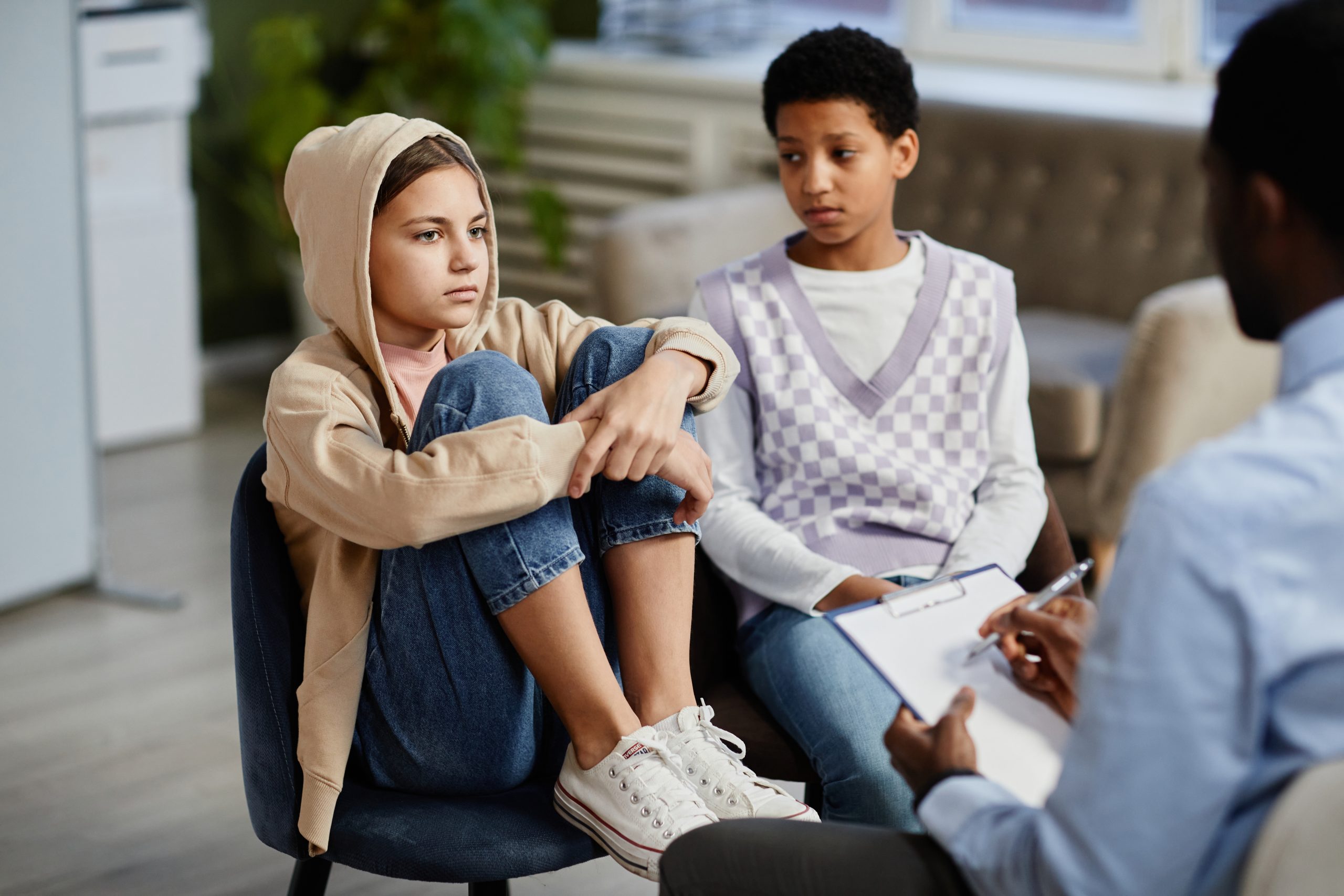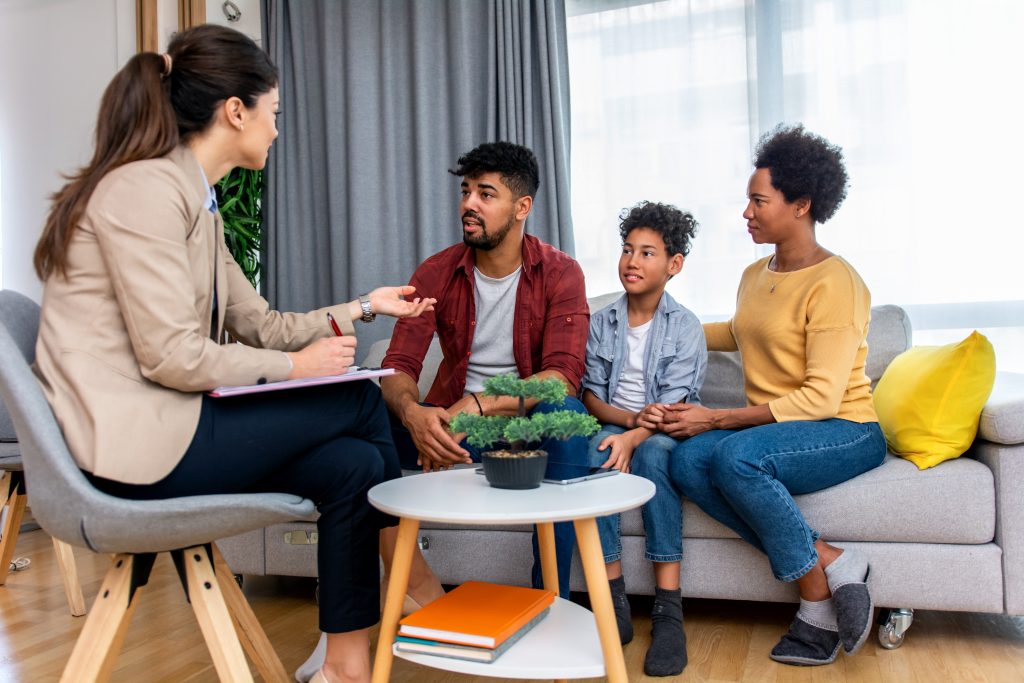Why Does Youth Violence Occur?
Youth violence is a pervasive problem across the United States, causing harm to individuals and the communities they live in. As young people grow, the dangers can progress from classrooms to city streets. Thus, youth violence prevention is key to a safer and healthier community.
There is no single factor that causes violence among children and adolescents. Youth violence often stems from various sources, including familial violence, bullying, and more. Studies show that children who are exposed to more risk factors are more likely to engage in violent behavior by eighteen years old.1
Some of the causes of youth violence include:

Aggressive Behavior in the Home or Community
Youth violence can stem from learned behavior. Children who see adults or peers being aggressive may mirror those actions. This can be especially true within the household – this experience counts as an Adverse Childhood Experience on the primary ACEs survey. Growing up in a violent and abusive environment can lead the child to believe this behavior is normal.2
Lack of Parental Supervision
Youths who are not supervised may feel free to do whatever they want. Without proper guidance, children and adolescents are more likely to engage in activities that lead to youth violence. Adult supervision can provide guidance and prevent negative behavior.
Access to Weapons or Drugs
When youths have access to weapons, drugs, or alcohol, they are more likely to engage in violence. Young minds are still developing until they reach their mid-twenties. This means children and teenagers are more susceptible to risky and dangerous behavior.
Easy access to weapons and drugs can result in youths hurting themselves or others due to impulse decisions and a lack of judgment.
Another primary reason that violence occurs in the home between youth and parents is due to substance use by youth.
Trauma, Bullying, and Peer Pressure
Traumatic experiences or bullying can increase violence among young people. This is true for both the victim and the perpetrator. Children may also pressure their peers to take part in youth violence, forming a vicious cycle of hurt and mistrust. According to the Centers for Disease Control and Prevention (CDC), one in five high school students reported getting bullied on school property.3
Media and Technology
The media and technology can influence youth violence. Television, music, video games, and the internet expose young people to violence. This may cause the idea that aggressive behavior is acceptable or even exciting.
With the rise of technology, it may expose youths to more violence and inappropriate behavior than ever.
Strategies for Youth Violence Prevention
There are a variety of strategies to help with youth violence prevention. These strategies focus on creating positive relationships and environments for children and adolescents. They can also help the adolescent find ways to cope with difficult situations.
Create Safe and Supportive Environments
Young people must have access to safe places to go and feel accepted. When needed, they need a place to turn to for social, emotional, and physical support. These places may include youth centers, clubs, churches, or recreational facilities.
In positive environments, children and adolescents can receive support and guidance. This can help them better understand their feelings and emotions.
Educate Youth on Conflict Resolution
Teaching youths the skills they need to handle difficult situations is an essential youth violence prevention strategy. It provides constructive ways to handle disagreements and react in a healthy manner. For instance, communication and negotiation are key to avoiding conflict and violence.4
Develop Coping Skills and Strategies
Another effective youth violence prevention strategy is helping children cope with aggression. Learning to manage their emotions, problem-solve, and seek help can positively affect youth development and promote healthy behavior.
Foster Mentorships and Positive Relationships
Having a mentor or positive role model can greatly influence behavior. Children and adolescents can learn valuable skills and develop positive behaviors through meaningful and supportive relationships with adults.
They need people who are investing in the younger generation’s future success. Mentors help children build self-esteem, feel supported, and avoid violence.
Prevent Future Risk Factors and Educate Children on ACEs
It’s important to identify children at risk for youth violence. Interventions focusing on reducing or eliminating future risk factors can help children avoid youth violence and criminal behavior. Examples of interventions include parenting classes, family counseling, and educational programs. The most effective youth violence prevention programs include a combination of activities. This broadens the program’s reach, helping as many individuals as possible.5
One of the best ways to prevent poor behavioral and health outcomes for children is by helping to foster strong, responsive relationships between children and their caregivers. Also, helping children and adults build core life skills can help to buffer a child from the effects of toxic stress. This excessive activation of the stress response system can lead to long-lasting wear-and-tear on the body and brain. Imagine, the effect would be similar to revving a car engine for days or weeks at a time.
ACEs Risk Factors
Some children may witness violence in the home, have a parent that has gone to prison, or have a caregiver that is reliant upon substances. These ACEs could contribute to a child’s violent tendencies. Educating and helping youth who have these ACEs can make all the difference for youth violence prevention.6

How Horizon Treatment Services Can Help in Youth Violence Prevention
Horizon Treatment Services commits to youth violence prevention. We offer education programs, services, and counseling, helping children and adolescents make better decisions and develop positive relationships. Our experienced professionals are dedicated to helping youths reach their fullest potential.
We are invested in preventing childhood violence and its far-reaching impacts at an early age by providing the support, programs, and education that families need and deserve.
Youth Trauma Prevention and Education Programs
Project Eden’s Alameda County Youth Services cater to adolescents and young adults aged twelve to twenty. Many of the students have been referred to us by faculty, staff, or themselves to learn and gain support. Students from areas like Castro Valley, Hayward, San Leandro, Dublin, Pleasanton, Livermore, and San Lorenzo are able to find information, community connection, and compassionate acceptance through Horizon’s multiple youth programs. Our goal is for every young person in our community to have access to the resources needed for success.
What is Trauma and How Does it Connect to ACEs and Toxic Stress?
While trauma has many definitions, typically in psychology it refers to an experience of serious adversity or terror—or the emotional or psychological response to that experience. Trauma-informed care or services are characterized by an understanding that problematic behaviors may need to be treated as a result of the ACEs or other traumatic experiences someone has had, as opposed to addressing them as simply willful and/or punishable actions.6
Youth and Family Counseling
We offer youth, family, and peer counseling. These services teach decision-making, coping, and relationship skills. They also focus on improving communication and understanding among family members and peers. Young people can create significant changes in their lives through counseling.
Addiction and Mental Health Services
At Horizon Treatment Services, we offer treatment for substance use and mental health disorders. Our caring and compassionate staff provides support and guidance to children and young adults at every step of the process.
We are committed to ensuring each individual receives the care they need to live a better life. Our treatments include:
- Group counseling support sessions
- Collateral sessions with families
- Support groups
- Psychoeducation
- Anger management
- Conflict resolution
- Prevention services
Contact Horizon Treatment Services Today
By implementing youth violence prevention efforts, we can create a safer and healthier society.
At Horizon Treatment Services, youths can develop social and emotional skills. This will allow them to build meaningful relationships and become productive members of society. We strive to provide teens and young adults with the tools they need to succeed.
Contact us today to learn more about our programs and see how we can help prevent young violence in your community!
Resources
1https://www.ncbi.nlm.nih.gov/books/NBK44293/
2https://www.theannainstitute.org/Finding%20Your%20ACE%20Score.pdf
3https://www.cdc.gov/violenceprevention/youthviolence/schoolviolence/fastfact.html
5https://developingchild.harvard.edu/resources/aces-and-toxic-stress-frequently-asked-questions/








